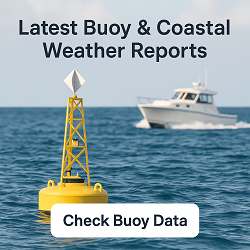Atoka, TN Weather Forecast and Current Conditions
Current Conditions From Nearby Local Station

Feels Like 56°F
at
Point Forecast at a Glance







7-Day Temperature Trend
Week Ahead Summary
High temperatures drop from 68°F to a low of 48°F, then recover to 54°F by week's end. Unsettled weather expected with rain likely on at least 5 days.
Climate Context
This week's forecast shows temperatures running 4°F below the historical average for November-December. Normal highs for this period are around 57°F with lows around 37°F.
This Date in Weather History
1982 - Hurricane Iwa lashed the Hawaiian Islands of Niihau, Kauai, and Oahu with high winds and surf. Winds gusting to 120 mph caused extensive shoreline damage. Damage totalled 150 million dollars on Kauai, and fifty million dollars on Oahu. The peak storm surge on the south shore was six to eight feet. It marked the first time in 25 years that Hawaii had been affected by a hurricane.
Atoka, TN 7 Day Weather Forecast Details
Monday Nov 24

Night: Showers and possibly a thunderstorm. Temperature rising to around 61 by 5am. Southeast wind around 15 mph becoming southwest after midnight. Winds could gust as high as 25 mph. Chance of precipitation is 90%. New rainfall amounts between a tenth and quarter of an inch, except higher amounts possible in thunderstorms.
Tuesday Nov 25

Day: A 40 percent chance of showers, mainly before 7am. Cloudy, then gradually becoming mostly sunny, with a high near 68. West wind 5 to 15 mph.

Night: Partly cloudy, with a low around 42. West northwest wind 5 to 10 mph.
Wednesday Nov 26

Day: Sunny, with a high near 50. Northwest wind 10 to 15 mph.

Night: Partly cloudy, with a low around 32. Northwest wind around 5 mph.
Thursday Nov 27

Day: Sunny, with a high near 49. Northwest wind 5 to 10 mph.

Night: Mostly clear, with a low around 27. Calm wind.
Friday Nov 28

Day: Mostly sunny, with a high near 48. Calm wind becoming east around 5 mph in the morning.

Night: A 20 percent chance of showers after midnight. Mostly cloudy, with a low around 36.
Saturday Nov 29

Day: A 50 percent chance of showers. Cloudy, with a high near 49.

Night: Showers likely. Cloudy, with a low around 40. Chance of precipitation is 60%.
Sunday Nov 30

Day: Showers likely. Mostly cloudy, with a high near 54. Chance of precipitation is 60%.

Night: Showers likely and possibly a thunderstorm. Cloudy, with a low around 41. Chance of precipitation is 60%.
Monday Dec 1

Day: Showers likely. Cloudy, with a high near 51. Chance of precipitation is 60%.
About Atoka, TN
Content from Wikipedia, licensed under CC BY-SA 3.0.
How We Provide Better Local Weather
Current conditions: We use the nearest available station to your location - including professional MESONET/MADIS and local weather stations - often miles closer than regional airports.
Forecasts: National Weather Service point forecasts predict for your specific area, not broad regional zones, making them far more relevant to your location.



